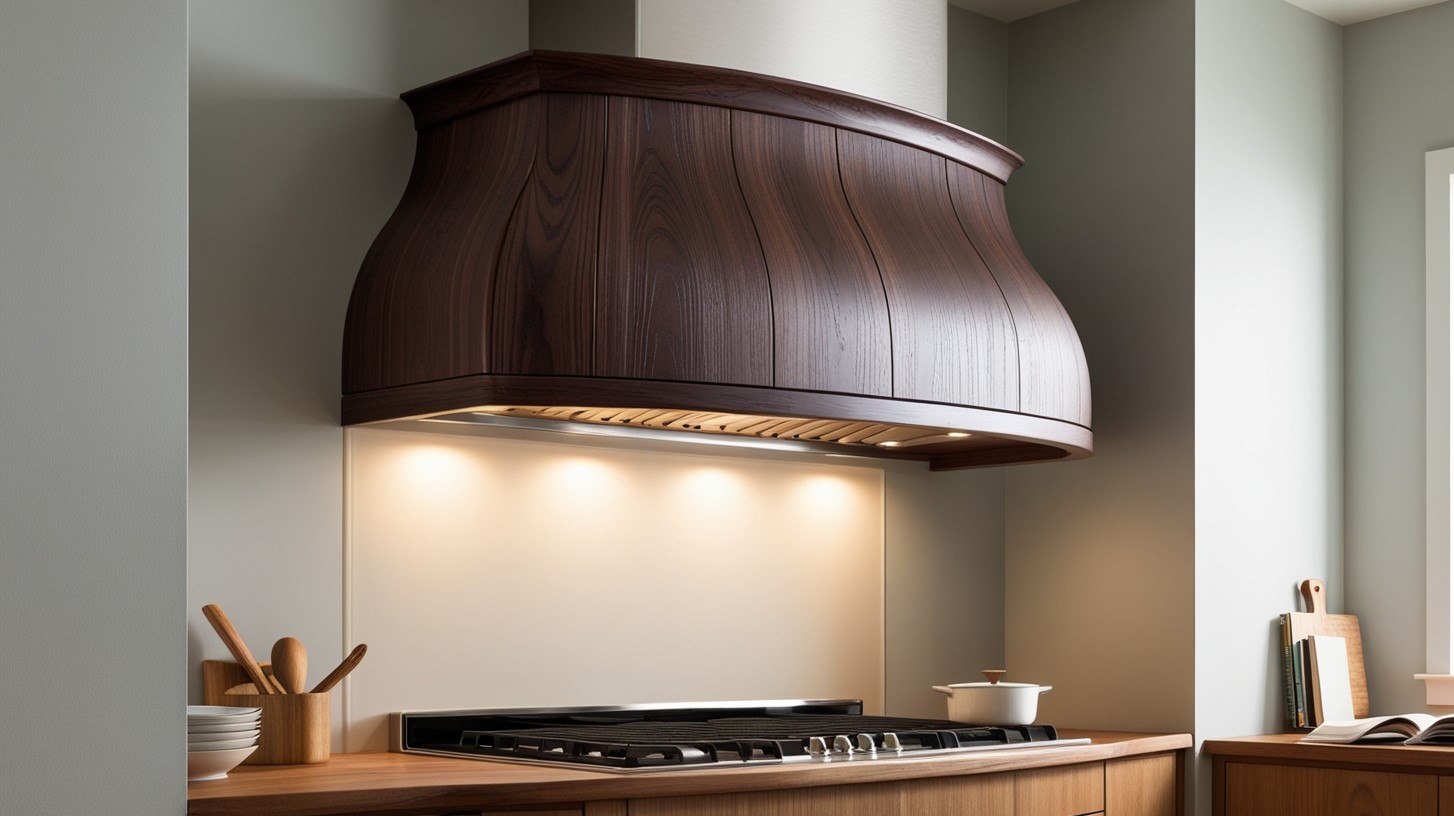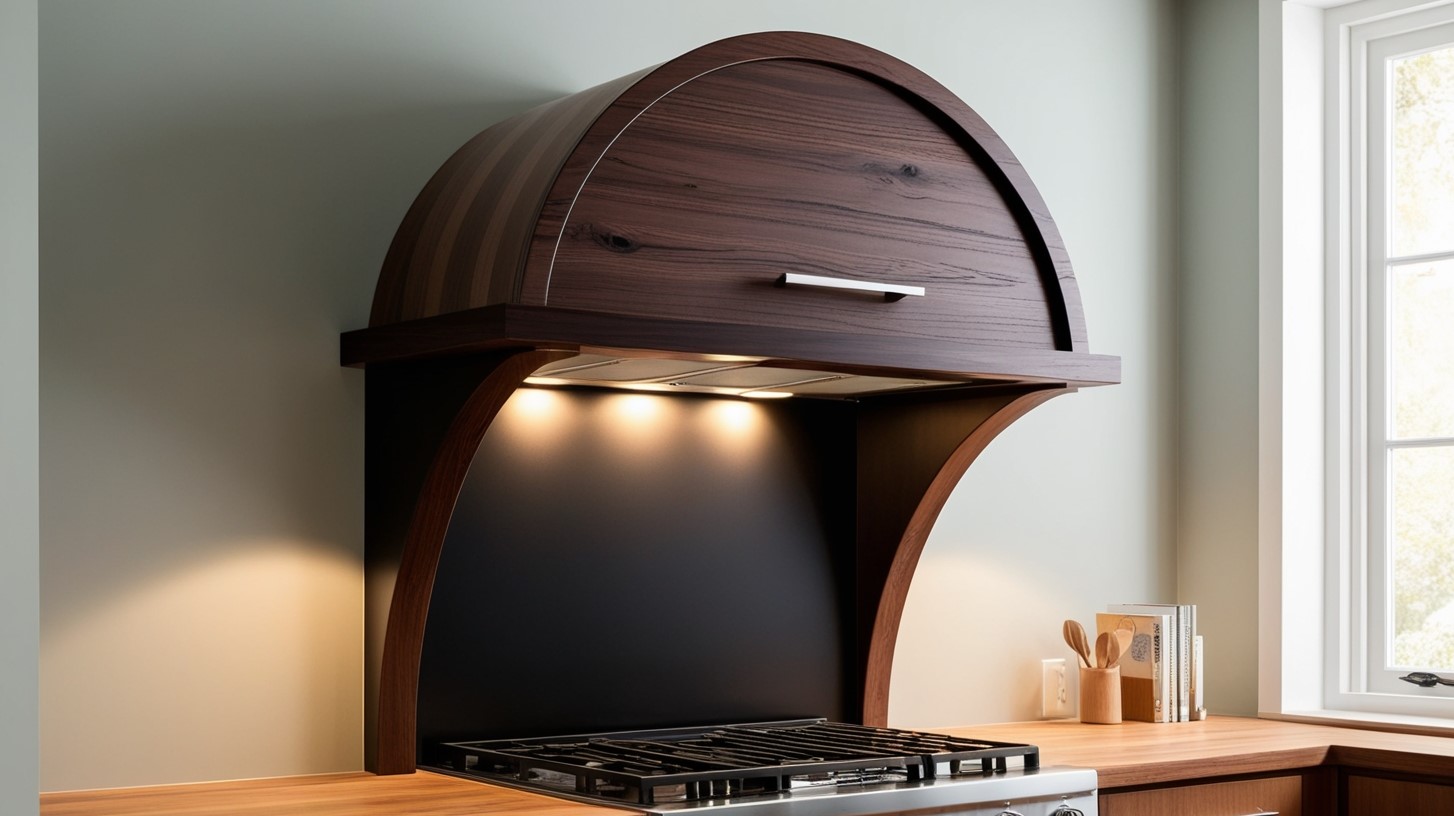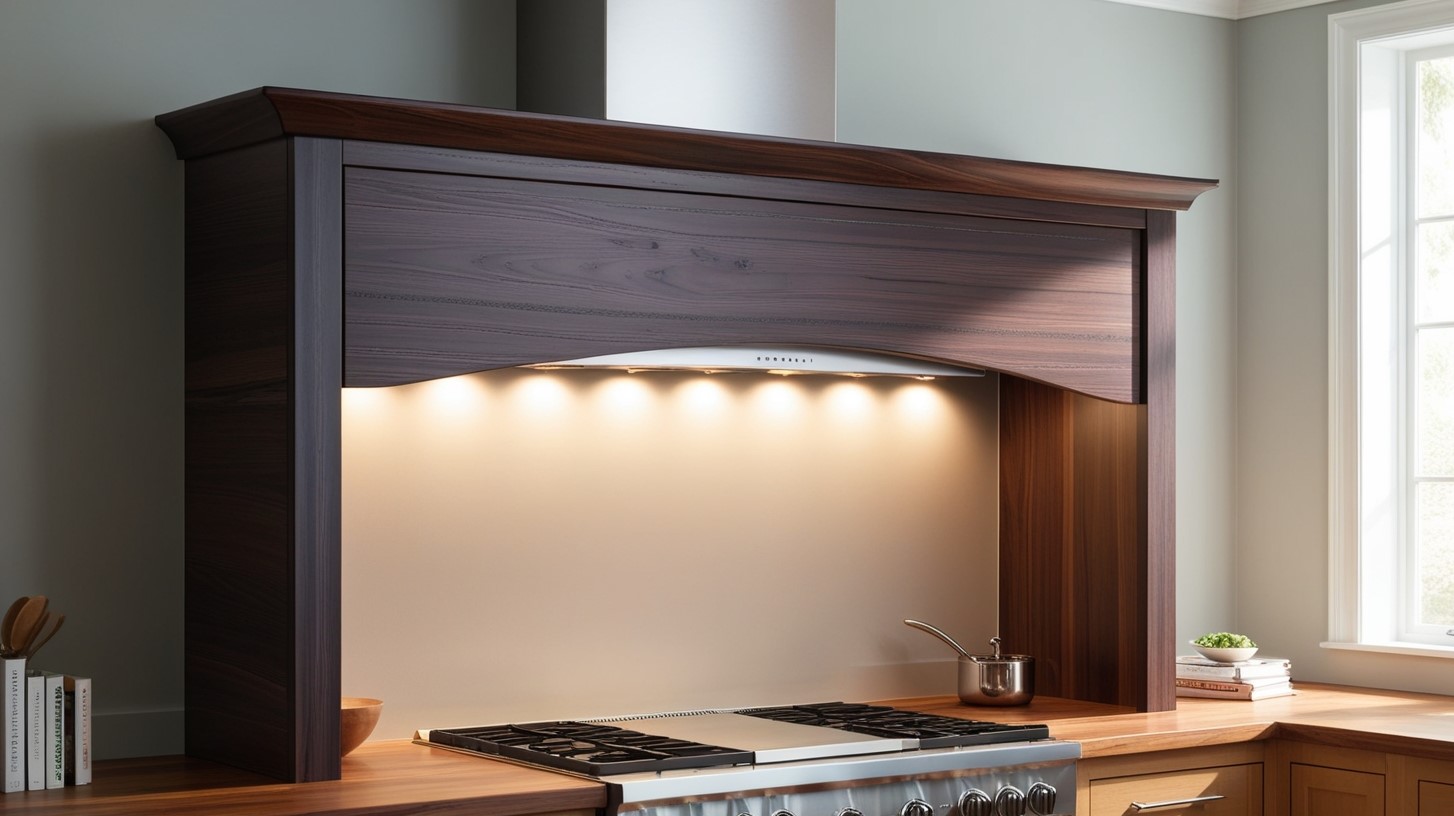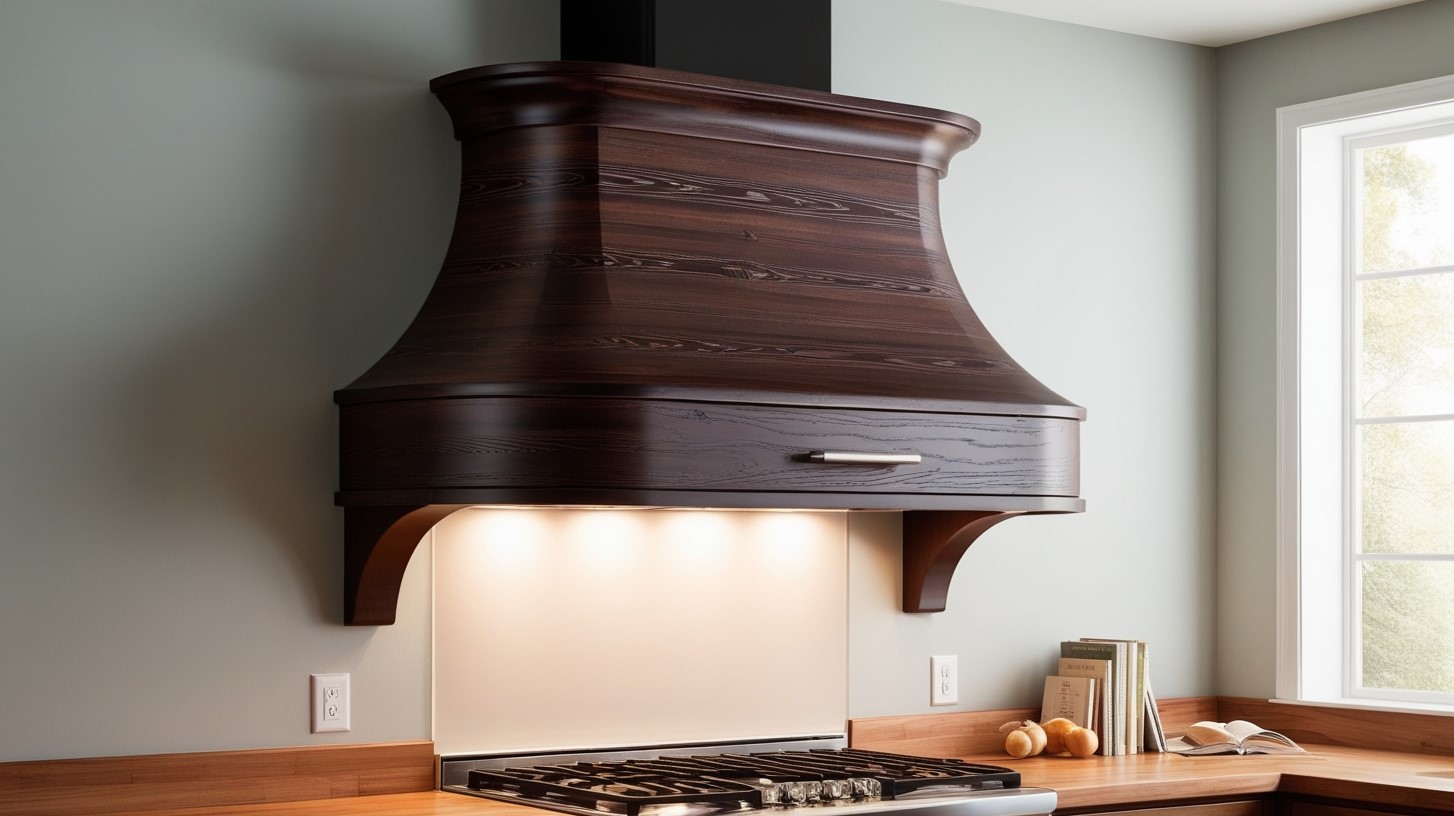A kitchen hood cabinet is more than just a functional feature in your kitchen. It serves as a key design element that enhances the overall aesthetic of your cooking space while ensuring the air remains clean and fresh. Whether you’re building a new kitchen or renovating an existing one, understanding the importance of kitchen hood cabinets and choosing the right one can make all the difference in terms of both form and function.
In this comprehensive guide, we will explore everything you need to know about kitchen hood cabinets, from their purpose and benefits to the different types available and how to choose the best one for your kitchen. We’ll also answer some of the most frequently asked questions to help you make an informed decision.
What is a Kitchen Hood Cabinet?
A kitchen hood cabinet is a cabinetry solution designed to house a range hood, which is an essential appliance that helps remove smoke, odors, grease, and heat from the kitchen while cooking. These cabinets are typically mounted above your cooking range or stovetop and are built to accommodate the size and style of your range hood.
The hood cabinet is an integral part of the kitchen design, as it can be customized to match your cabinets and create a cohesive look. The design of the cabinet can be sleek and modern, rustic, or traditional depending on your kitchen’s aesthetic. Kitchen hood cabinets are available in a variety of materials, including wood, metal, and even glass, making them versatile enough to suit any style of kitchen.

Benefits of a Kitchen Hood Cabinet
1. Improved Air Quality
The primary function of a kitchen hood cabinet is to help improve the air quality in your kitchen. By installing a range hood within the cabinet, you can remove cooking fumes, smoke, steam, and grease that can accumulate in the air. A good range hood not only provides comfort but also helps maintain a cleaner kitchen environment by preventing grease buildup on your walls and ceilings.
2. Enhanced Aesthetic Appeal
A kitchen hood cabinet adds a visually appealing focal point to your kitchen. With a well-designed hood cabinet, you can achieve a seamless look that blends the functional aspect of your kitchen hood with the style of your cabinetry. Custom kitchen hood cabinets are available in different shapes, sizes, and finishes, offering endless design possibilities to suit your taste.
3. Space Optimization
Hood cabinets help maximize the use of available kitchen space. In some designs, the space above the range hood can be used for additional storage, keeping your kitchen organized and clutter-free. This extra storage can be ideal for kitchen essentials such as spices, oils, or cooking utensils.
4. Noise Reduction
Some range hoods, especially under-cabinet and island models, can generate noise during operation. A well-designed kitchen hood cabinet can help reduce the noise by enclosing the range hood and minimizing sound transmission. This can make your kitchen more comfortable while you’re cooking or entertaining guests.
5. Easy Maintenance
Kitchen hood cabinets are designed to make cleaning and maintaining your kitchen range hood easier. Many cabinet designs feature removable panels, allowing you to access the range hood filters and fan for cleaning. Proper maintenance of your range hood is essential to ensure it functions efficiently and lasts for years.

Types of Kitchen Hood Cabinets
1. Under-Cabinet Range Hood Cabinets
Under-cabinet range hood cabinets are the most common and versatile type of hood cabinet. These cabinets are mounted underneath your upper cabinets and house the range hood, ensuring that it is concealed while remaining easily accessible. Under-cabinet range hoods are available in various sizes and finishes, and they work well in both modern and traditional kitchens.
2. Custom Range Hood Cabinets
Custom range hood cabinets are designed to suit your specific kitchen layout and aesthetic preferences. These cabinets are typically made to match your existing cabinetry, creating a uniform look throughout the kitchen. Custom cabinets can accommodate a wide range of range hoods, including those that are larger or uniquely shaped. If you want a truly personalized kitchen design, custom kitchen hood cabinets offer endless possibilities.
3. Chimney-Style Range Hood Cabinets
Chimney-style range hood cabinets are a popular choice for larger kitchens with high ceilings. These cabinets feature a tall, vertical chimney design that extends above the cooking surface, creating a dramatic focal point in the kitchen. The chimney-style hood cabinet is often used in rustic, industrial, or contemporary kitchen designs and can be made from materials like wood, stainless steel, or stone.
4. Island Range Hood Cabinets
Island range hood cabinets are designed for kitchens with a cooking range located on an island or peninsula. These hood cabinets are suspended from the ceiling above the range and can be designed to match your kitchen’s style. Island hoods come in various styles and materials, and they are ideal for open-concept kitchens, as they can serve as both a functional and stylish centerpiece.
5. Integrated Range Hood Cabinets
Integrated range hood cabinets are designed to conceal the range hood entirely within the cabinetry, offering a clean, minimalist look. The cabinet front is typically made from the same material and finish as your existing cabinets, creating a seamless and integrated design. This type of hood cabinet is ideal for those who want a sleek, modern kitchen without visible appliances.
Choosing the Right Kitchen Hood Cabinet for Your Space
1. Consider Your Kitchen Style
When choosing a kitchen hood cabinet, it’s essential to consider the overall style of your kitchen. For a more traditional look, you may prefer a wooden hood cabinet with intricate details or a chimney-style design. If your kitchen has a more modern or industrial feel, a stainless steel range hood or a minimalist integrated cabinet could be a better fit. The material and design of your kitchen hood cabinet should complement the rest of your cabinetry and decor.
2. Evaluate Your Cooking Needs
The type of range hood you choose will depend on your cooking habits. If you do a lot of heavy cooking with grease and smoke, you may need a more powerful range hood with higher airflow. For light cooking, a quieter, lower-powered range hood may suffice. Make sure your hood cabinet can accommodate the type of range hood you need based on its size and functionality.
3. Consider Cabinet Size and Placement
The size of your kitchen and the location of your cooking range will influence the size and placement of the hood cabinet. In smaller kitchens, under-cabinet hoods are ideal as they save space. For larger kitchens with islands, an island range hood may work best. Ensure the hood cabinet is appropriately sized to provide effective ventilation while maintaining the aesthetic balance of your kitchen.
4. Check for Noise Levels
Range hoods can generate noise, which may be amplified in an open kitchen design. Look for a kitchen hood cabinet that helps minimize noise levels by absorbing sound. Some cabinets come with noise-reducing features, such as insulated panels, to keep your kitchen quieter while cooking.
5. Budget Considerations
Custom and high-end range hoods can be expensive. While kitchen hood cabinets are available in a variety of price ranges, it’s important to balance quality with your budget. Keep in mind that investing in a high-quality range hood and hood cabinet can improve both the functionality and longevity of your kitchen.

Maintenance Tips for Kitchen Hood Cabinets
- Clean the Range Hood Regularly: Clean the filters, grease traps, and fan regularly to ensure your range hood operates efficiently. Follow the manufacturer’s instructions for cleaning to avoid damaging the appliance.
- Check for Proper Ventilation: Ensure that your range hood is venting air properly to the outside. Blocked or clogged ducts can reduce efficiency and create undesirable odors in your kitchen.
- Wipe Down the Cabinet: Dust and wipe down the kitchen hood cabinet frequently to prevent grease buildup. Use a gentle cleaning solution and soft cloth to avoid damaging the finish.
- Inspect for Wear and Tear: Regularly inspect the hood cabinet for any signs of wear or damage. This will help you address potential issues early and prolong the life of the cabinet.
Frequently Asked Questions (FAQs)
1. Do I need a kitchen hood cabinet?
While a kitchen hood cabinet is not an absolute necessity, it is highly recommended for maintaining air quality and cleanliness in your kitchen. A range hood helps eliminate smoke, odors, and grease, improving the air and reducing the risk of grease buildup on your walls and cabinets.
2. Can I install a kitchen hood cabinet myself?
Installing a kitchen hood cabinet can be a complex task, as it involves mounting the cabinet securely, positioning the range hood, and connecting the ventilation system. While some homeowners may opt for a DIY installation, it’s typically recommended to hire a professional installer to ensure proper functionality and safety.
3. How do I choose the right size for a kitchen hood cabinet?
The size of your kitchen hood cabinet should be based on the size of your cooking range or stovetop. A general rule of thumb is that the hood should be at least as wide as the cooktop and extend about 24 inches above the cooking surface. If you have a larger kitchen or high ceilings, you may need a taller or more powerful range hood.
4. Can I use a kitchen hood cabinet for other appliances?
While kitchen hood cabinets are designed to house range hoods, some designs allow for additional storage or the inclusion of other appliances, such as microwave ovens or under-cabinet lighting. Check the cabinet’s specifications to determine if it can accommodate additional features.
5. What is the best material for a kitchen hood cabinet?
The best material for a kitchen hood cabinet depends on your kitchen’s design and your preferences. Common materials include wood, stainless steel, and custom finishes that match your existing cabinetry. Choose a material that complements the overall style and durability of your kitchen.
Conclusion
A kitchen hood cabinet is an essential component of both the functionality and aesthetics of your kitchen. It helps keep the air clean, adds to the design of your cooking space, and offers practical storage solutions. With the right selection and proper maintenance, your kitchen hood cabinet can be a long-lasting, valuable addition to your home.

